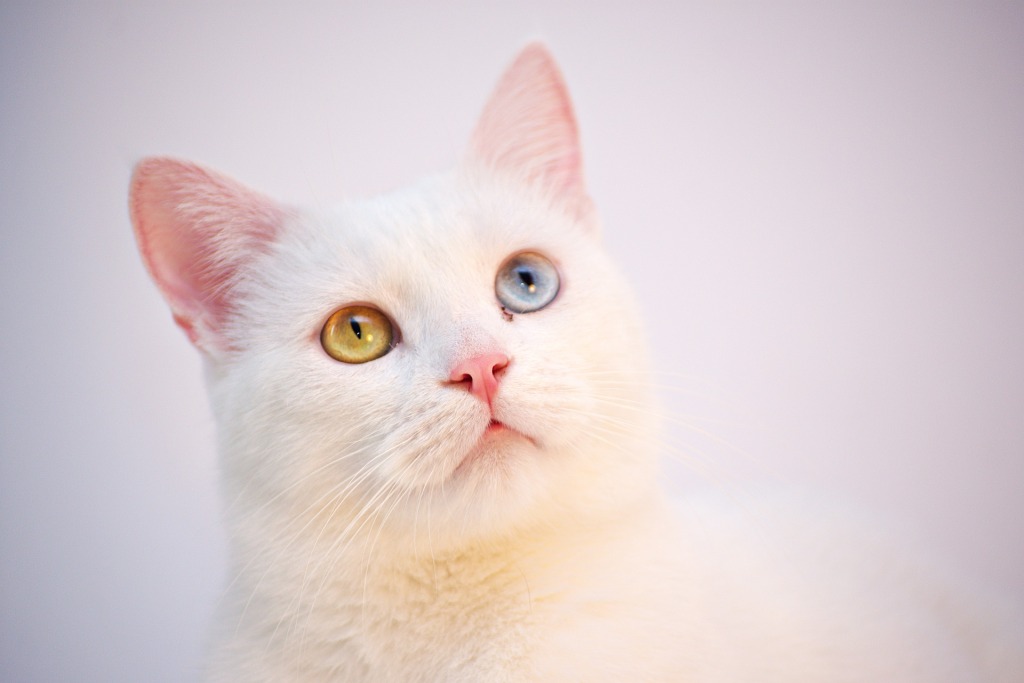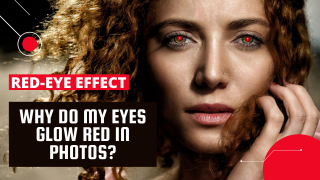Ever wondered why your eyes glows red like a vampire or zombie in some photographs? These spooky red eyes sometimes ruins the perfect shot. The phenomenon is called Red-eye effect and it is the eye’s biology interacting with the camera’s lighting mechanism. It occurs when we use a photographic flash that is very close to the camera lens in ambient low light.
Light enters the eye through the cornea and it passes through the pupil. Pupil is a small hole located in the center of the colored circular muscle called Iris. Eye color is defined by that of the Iris. Then the light hits the lens and finally reaches retina where it turns the light into electrical signals. The optic nerve then sends these signal to the brain that forms the images what we see.

The amount of light that gets to the retina is controlled by the pupil. If it is a sunny day, the pupil constricts making the pupil smaller and only allows a small amount of light to pass in. If it is dark, the pupil dilates and becomes large to allow as much as light to pass in.

Pupil constricts 
Pupil dilates
When the light from a camera flash goes off, the pupil doesn’t have time to react and constrict. This huge burst of light reaches the interior surface of the eye called the fundus and reflects back. The reflected light is red because due to the rich blood supply of the choroid, a layer which is between the retina and sclera ( the white part of the eye ).
The amount of red light emerging from the pupil depends on the amount of melanin in the layers behind the retina because melanin absorbs light. So, people with light skin and blue or green eyes tend to have less melanin and may get red eyes in photos more often. Even animals with one blue and one brown colored eye will show a pronounced red-eye effect in the blue eye than the brown eye.

Children will get a red-eye effect more readily than adults because their pupil will dilates fast. Also people who naturally have larger pupils than others tends to get more red-eye effect.
A white or yellowish glow in one eye especially in kids could be more serious. It signals some critical eye conditions such as cataracts, retinal detachment, eye infections, Coats’ disease, or cancer Retinoblastoma.

The red-eye effect in the photos can be prevented either by not looking directly at the camera or by improving the lighting in the room or by using the anti-red-eye camera function or by using pre-flashes before the final flash or by moving the flash and lens further apart. Also, make sure the subjects are not drunk because when we drink, the pupils will not close fast enough.
White, yellow or green glow reflected in many animal eyes like dogs, cats, deer or horses called Eyeshine is different from Red-eye effect. Eyeshine is caused by a special reflective layer called Tapetum lucidum that provides certain animals to have superior night vision. Humans do not have a Tapetum Lucidum.

Red-eye effect 
Eyeshine
If you notice anything else unusual about your eyes or your family’s eyes in photos, speak with an eye doctor to rule out more serious vision problem.
If you would like to watch it as a video, please subscribe to STUFF I LEARNED YouTube channel : https://bit.ly/2CfQJB8
Visit :
Pinterest : https://pinterest.com/StuffILearnedChannel
Quora : https://quora.com/profile/Stuff-I-Learned
Tumblr : https://tumblr.com/blog/stuffilearned
Twitter : https://twitter.com/stuffILearnedYT
Credits :
https://en.wikipedia.org/wiki/Red-eye_effect
https://www.allaboutvision.com/resources/red-eye-photo.htm
https://www.goodeyes.com/blog/red-eyes-photos/#:~:text=The%20appearance%20of%20red%20eyes,is%20reflected%20from%20the%20retina.&text=When%20the%20light%20is%20reflected,color%20you%20see%20in%20pictures.
https://brightside.me/wonder-curiosities/here-is-the-reason-why-you-have-red-eyes-in-photographs-242960/
https://coopervision.com/blog/why-eyes-turn-red-pictures
https://lifehacker.com/why-your-eyes-look-red-in-photos-and-how-to-prevent-it-1785821974
https://www.rd.com/article/how-to-stop-red-eye-in-photos/
https://www.yalescientific.org/2011/05/what-causes-the-red-eye-effect/
https://electronics.howstuffworks.com/question51.htm
http://sciencenetlinks.com/science-news/science-updates/camera-red-eye/
http://www.todayifoundout.com/index.php/2011/09/what-causes-red-eyes-in-photographs/
https://www.colorpilot.com/redeye_effect.html
Images :
Image by ariadne-a-mazed from Pixabay
Image by Dawn I’ll never tell from Pixabay
Image by PeterPan23 from Wikimedia
Image by Oliana Gruzdeva from Pixabay
Image by StockSnap from Pixabay
Image by Michal Jarmoluk from Pixabay
Image by Richard Cejas from Pixabay
Image by sipa from Pixabay
Image by Gerd Altmann from Pixabay
Image by Ryan McGuire from Pixabay
Image by David Jenne from Pixabay
Image by 🎄Merry Christmas 🎄 from Pixabay
Image by Henry Vandyke Carter and Henry Gray (1918) from Wikimedia
Image by Alp Cem from Pixabay
Image by lisa runnels from Pixabay
Image by Didi S from Pixabay
Image by miteshtake from Pixabay
Image by marioserraf from Pixabay
Image by J Morley-Smith from Wikimedia
Image by Stefan Keller from Pixabay
Image by Michal Jarmoluk from Pixabay
Image by siooh from Pixabay
Image by Hans Braxmeier from Pixabay
Image by PublicDomainArchive from Pixabay
Image by StockSnap from Pixabay
Image by Michal Jarmoluk from Pixabay
Image by The Rambling Man from Wikimedia
Image by Bowlhover from Wikimedia
Image by Tom Junek from Wikimedia
Image by Pexels from Pixabay
Music :
Purple Planet Music – Brave Endeavor




